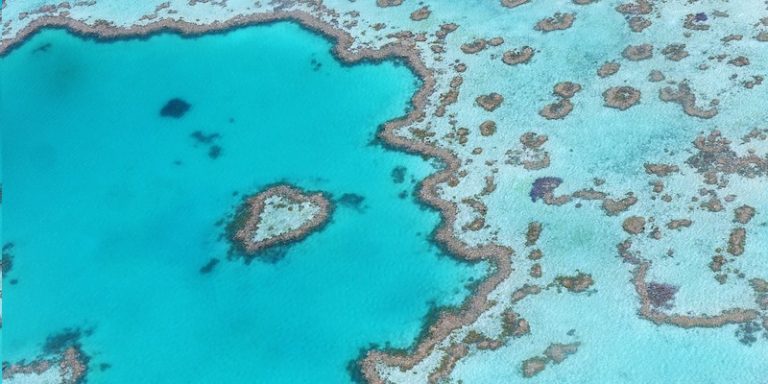
Today, as every June 8, is the United Nations World Ocean Day. This year, UNESCO wanted to highlight the crucial importance of innovation for a sustainable ocean by mentioning some of the technologies used: from the drone surveillance of wildlife in the Wrangel Island Reserve Natural System in the Russian Federation to the use of artificial intelligence in Australia’s Great Barrier Reef.
As UNESCO points out, UNESCO World Heritage marine sites are also driving scientific innovation and helping to rapidly shape the future of ocean conservation. While these sites are particularly well known for their exceptional ecosystems, unparalleled beauty and iconic biodiversity, it is their ability to translate science and innovation into policy and decision-making that is at the heart of their conservation leadership.
Wrangel Island Reserve
From March to April, polar cubs from the Wrangel Island Nature Reserve System (Russian Federation) leave their den to take their first plunge into the icy sea and learn about seal hunting. For local rangers, this period represents the high point of the wildlife monitoring season. It is during this time that annual trends in the world’s densest polar bear population are recorded. Polar bear dens are extremely difficult to locate on the snow-covered Arctic island, but thermal imaging cameras attached to drones are now able to do this work with unprecedented accuracy, using less fuel and providing safer working conditions for rangers.
The Belize Barrier Reef Reserve Network
Remote-controlled aerial vehicles are also used to monitor the vast ocean areas of the Belize Barrier Reef Reserve Network, a World Heritage site and the second largest coral reef system in the world. The vehicles capture high-resolution photographs and 3D digital surface models that help scientists understand the changing conditions of this fragile coral reef.
The Great Barrier Reef of Australia
At Australia’s Great Barrier Reef, artificial intelligence, image recognition technology and in-depth learning have enabled scientists to better determine the location of invasive species, leading to increased implementation of control programs such as those used for the devastating starfish Acanthaster planci.
Today, the UNESCO World Heritage List includes 50 emblematic marine sites in 37 countries. As iconic marine protected areas, they are particularly well placed to spearhead change and embody symbols of hope in a changing ocean. The United Nations Decade of Ocean Sciences for Sustainable Development, which will run from 2021 to 2030, is a unique opportunity for the world to increase investment in ocean sciences and to mobilize the latest scientific and innovative advances in safeguarding our common global marine heritage for future generations.
Translated from Journée mondiale de l’océan : L’UNESCO présente des cas d’usage de la technologie pour un océan durable









